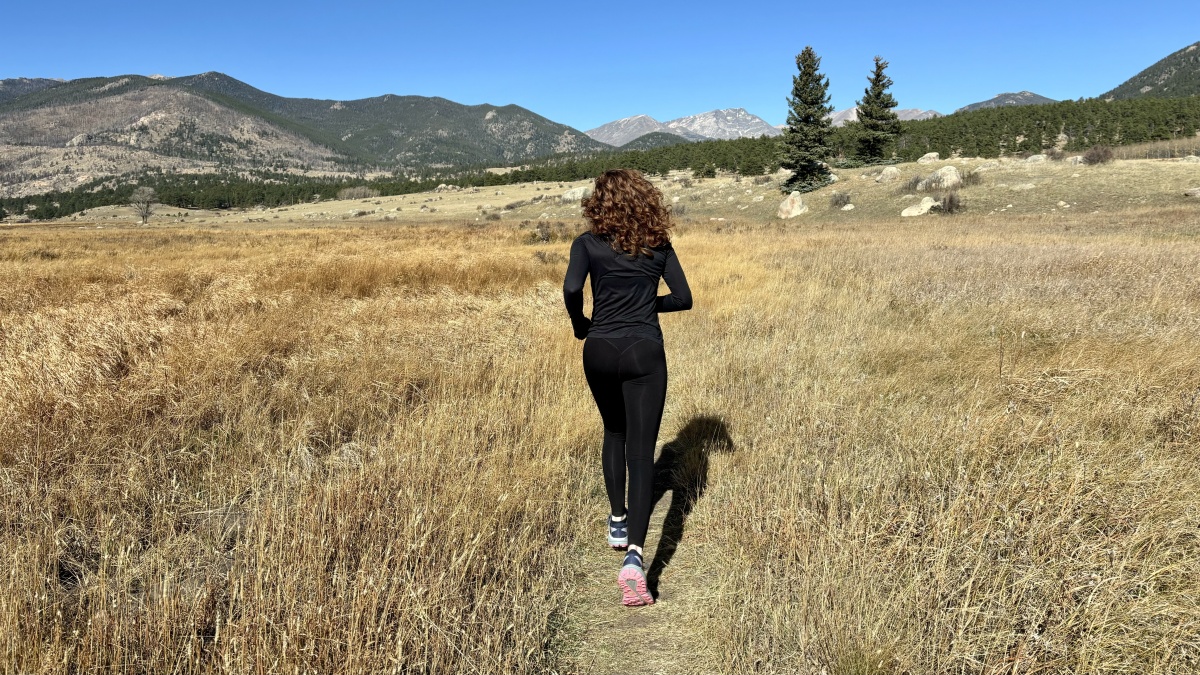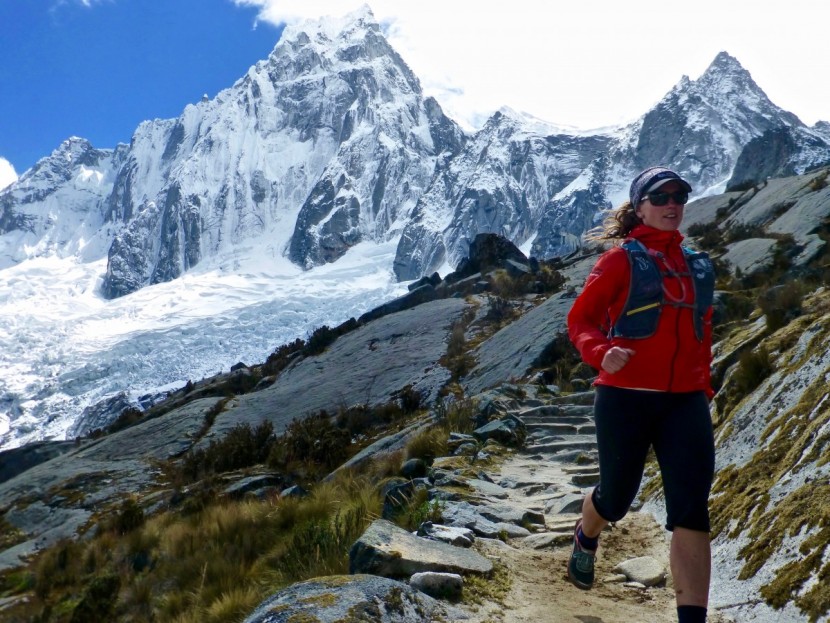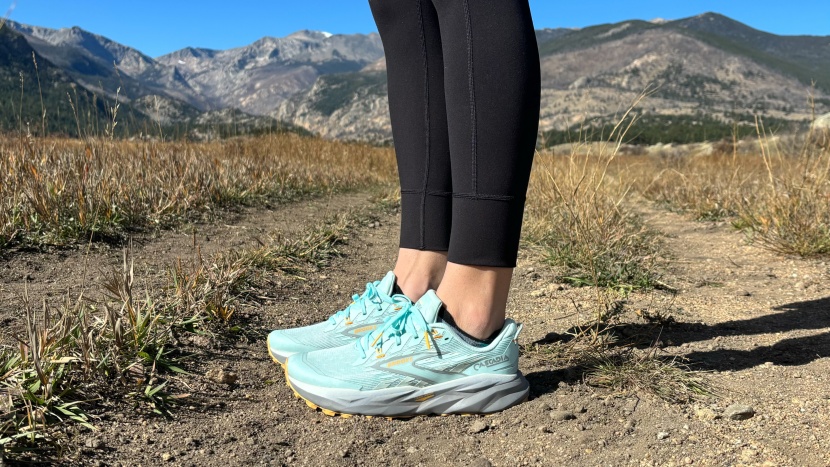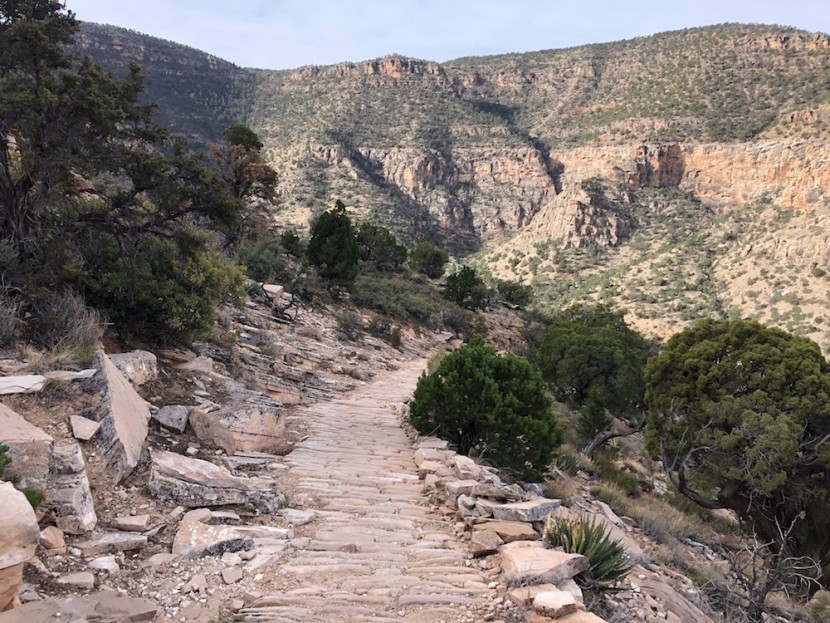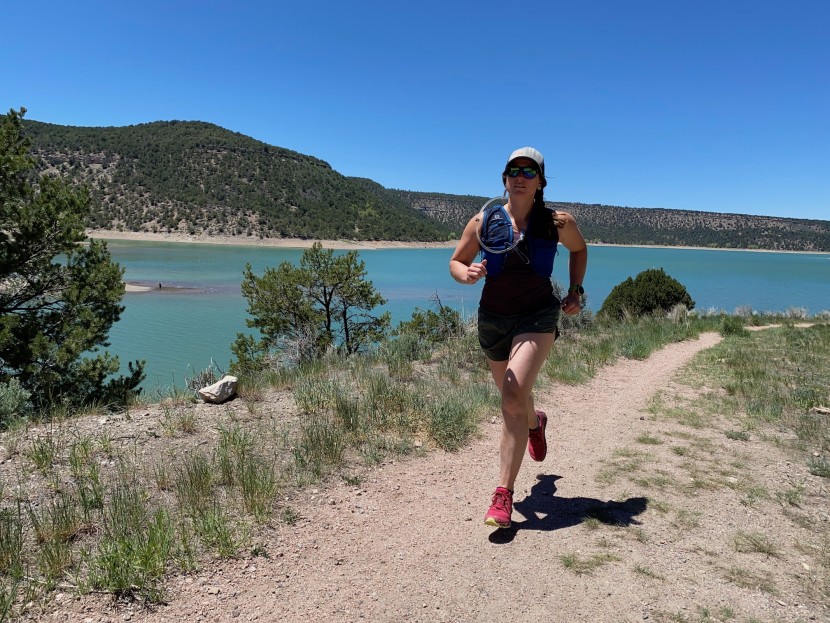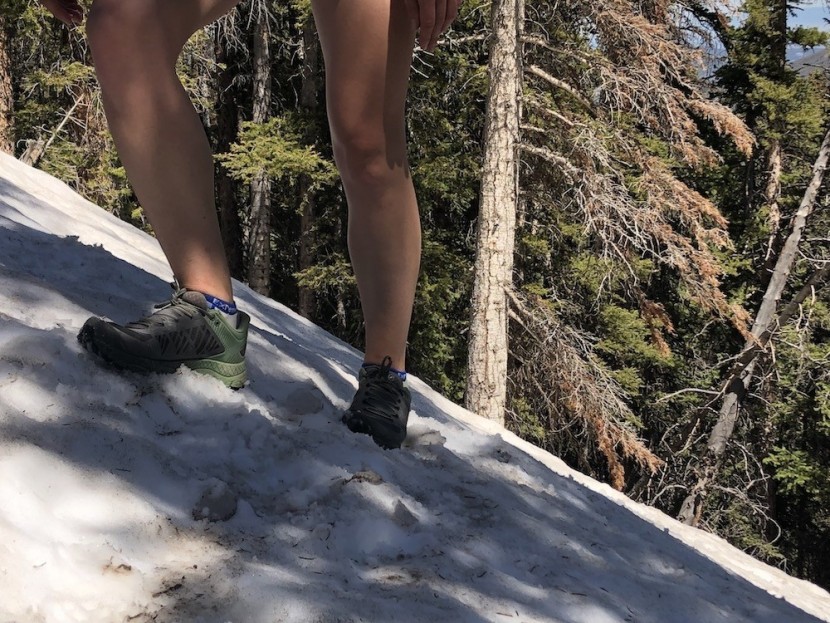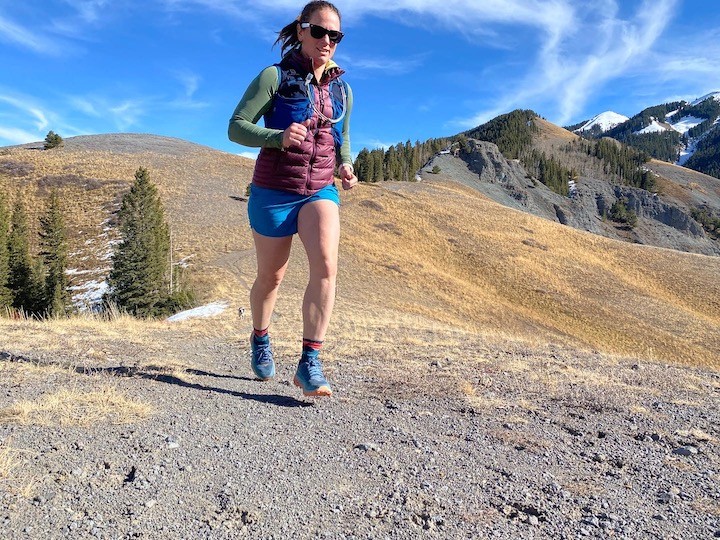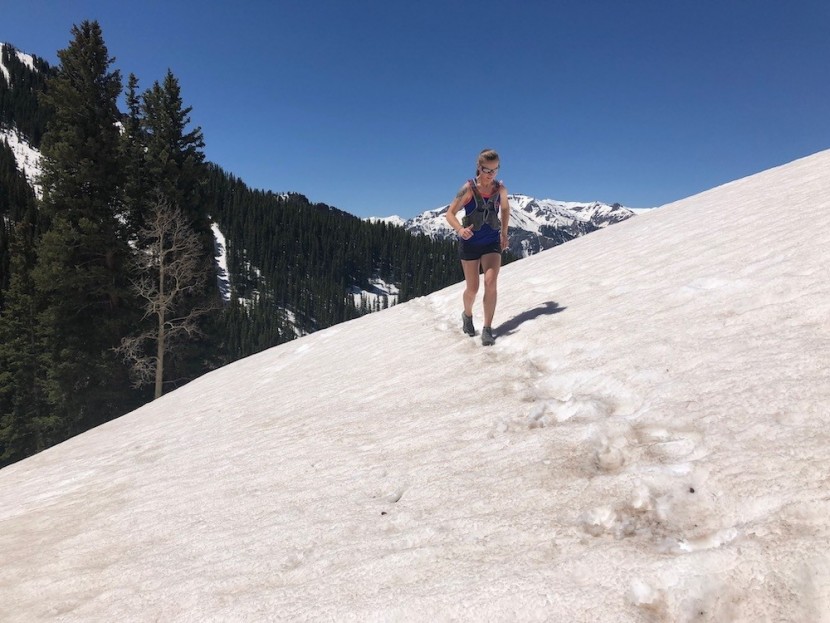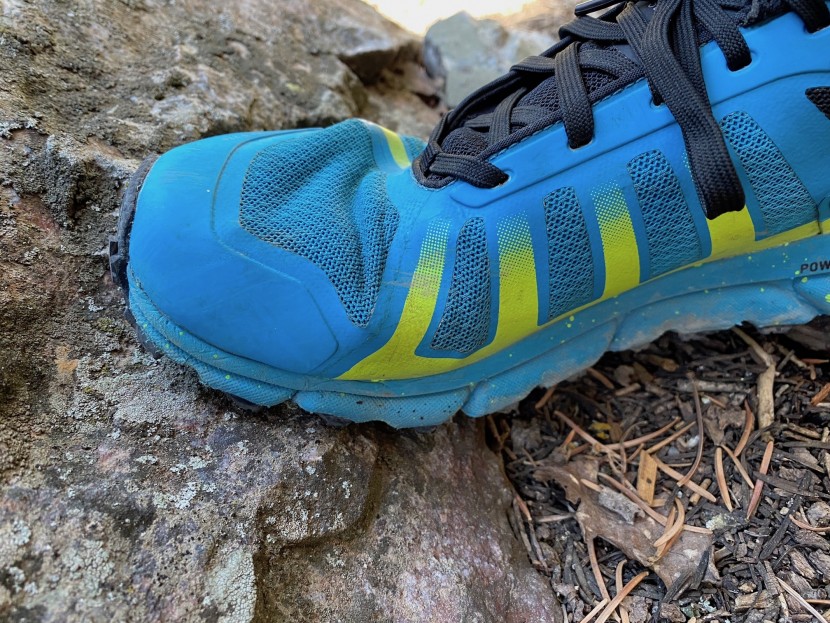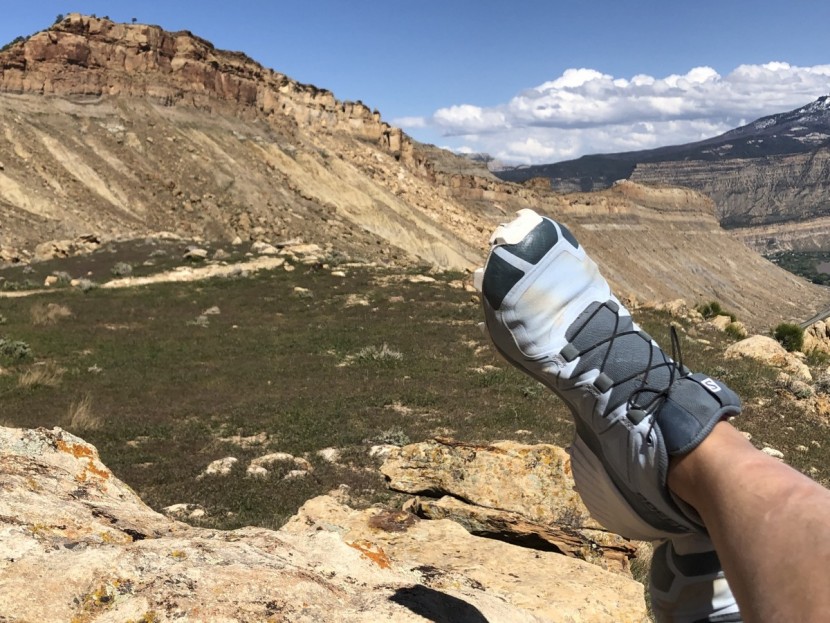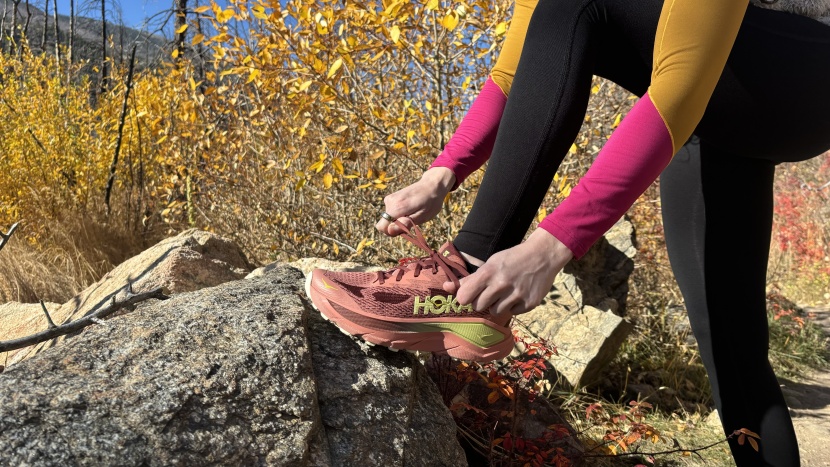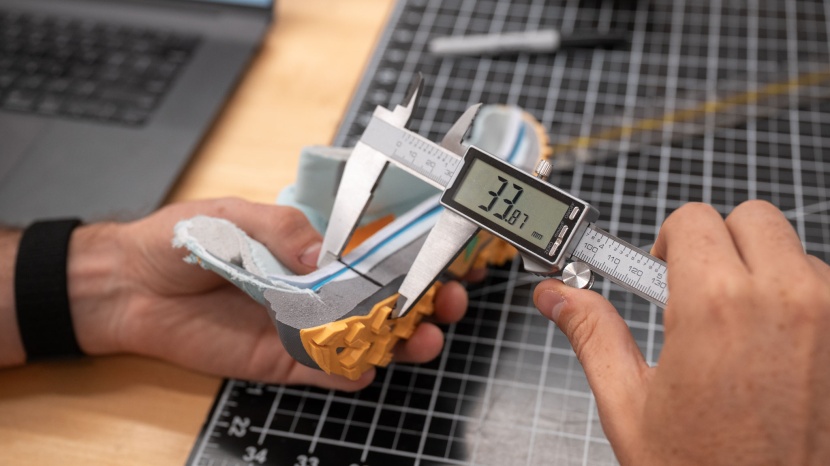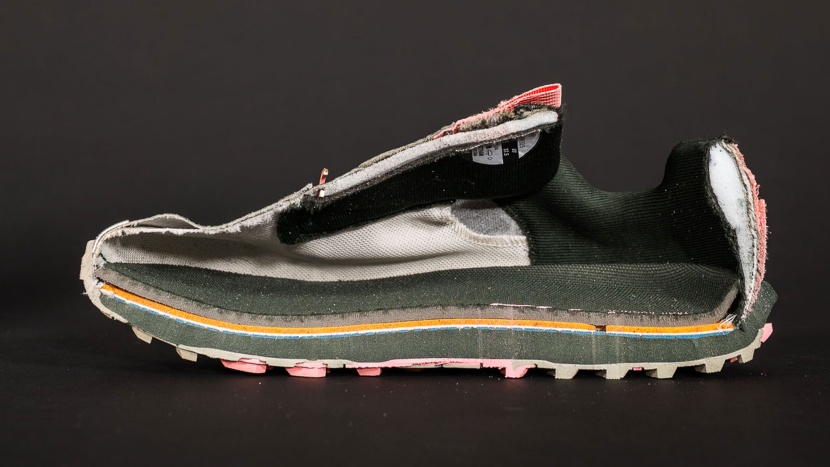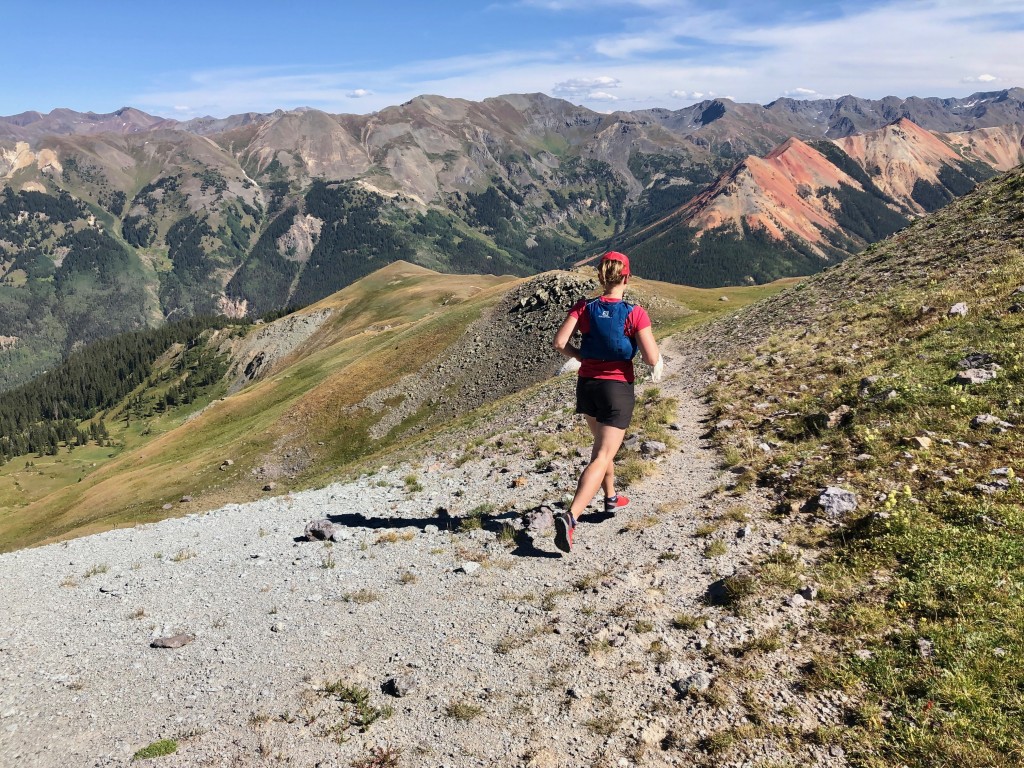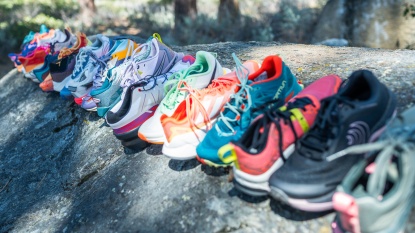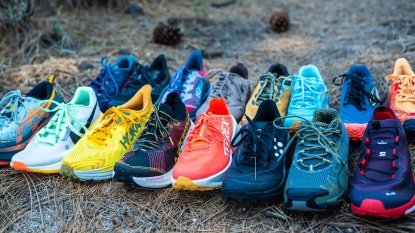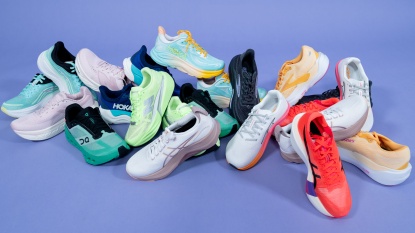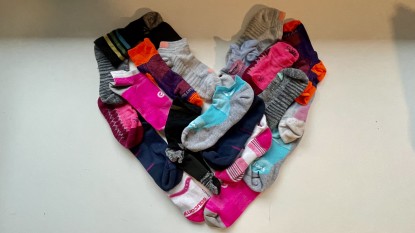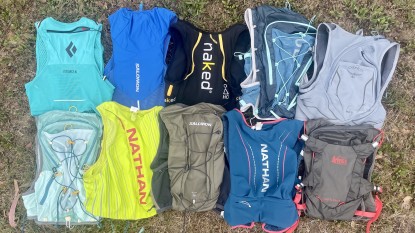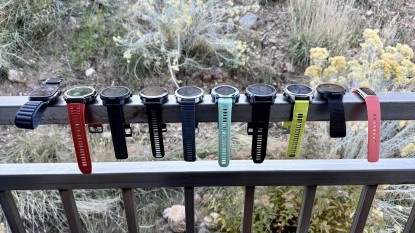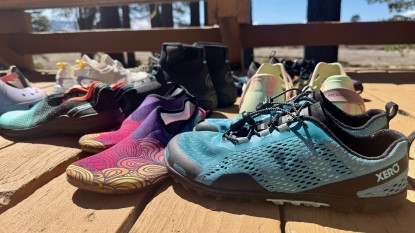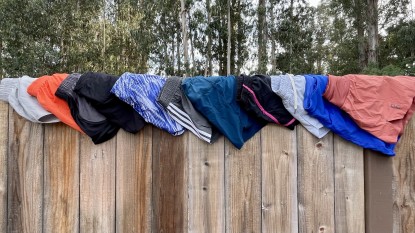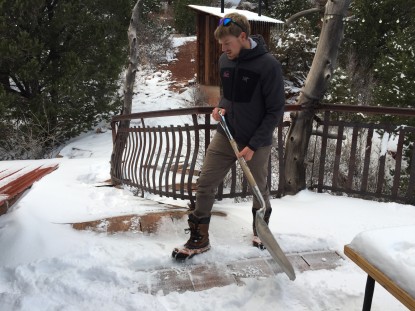As trail running gains popularity, trail running shoes continue to evolve. On the market, you'll find hundreds of options ranging from super lightweight and low profile to those with stacks of cushioning. Some are narrow, while others are wide. Some are built for speed, while others might be clunky and designed for stability. So, where to begin? We've taken the time to test different trail runners and put together a few helpful pointers based on our experience with each style. Our goal is to help you navigate this saturated sea of options and walk (or run) away in a pair of shoes you can be satisfied with.
What is a Trail Running Shoe?
A trail shoe is designed for, well, the trail — a place littered with hazards underfoot. Trail running shoes are more protective than road running shoes, with excellent traction to tackle uneven surfaces and unknown terrain. Additionally, a good trail runner is built for comfort and stability to keep you exploring through the day without turning an ankle. If you're heading into the backcountry to explore singletrack trails leading you to that summit you've been dreaming of, a trail running shoe is a crucial piece of gear to help get you there. Here's where to begin.
Budget
It's essential to set your budget in the world of shoes. If you're looking for a high-performance shoe, be ready to shell out some cash. A great shoe is durable and built to carry you for hundreds of miles. Set a number you're willing to spend when considering your budget, then peruse the options in that price range. We have tested many options that range from decently affordable to wildly expensive. While some of the more expensive options are high performers, a casual runner may not need that kind of performance, and a more basic style may suit your needs perfectly.
Where Do You Run?
When considering this question, think about how loose or slippery the trail will be, the angle, the weather, and generally what you need for where you want to go. Deciding what's most important to you on your run is paramount to figuring out what shoe is the best for your personal trail experience. Knowing this information will help you decide on the level of technical performance your shoe needs. In the next section, we will consider different types of shoe construction to help you look for specific attributes that will slim down the choices a bit. If you're new to running, we recommend choosing a middle-of-the-road shoe that is versatile so you can explore different trails and get to know your preference.
Consider the Running Surface
If you've ever typed “trail running shoes” into Google, you know that a wide variety of trail runners come up. Here, we fit shoes into different categories to help you understand what use is best for each. It is very difficult to lump trail runners into common categories as there are so many options with different niches, but we've roughly categorized them into light and rugged options.
Light Trail Runners
Light trail runners feature minimalist materials and are designed for consistent and relatively smooth surfaces. Think of well-groomed trails, dry and rocky trails, dirt roads, and sometimes pavement. This category looks like a road running shoe with minimal protective features, a lightweight design, and less aggressive lugs. The lugs on the outsole are typically flatter and shallower and are less prone to wear and tear.
Protection will be moderate to minimal with a more flexible design. These trail runners certainly can be used for harder trails, but keep in mind it'll put more strain on your body due to the lack of rigidity, protection, and stability.
Rugged Trail Runners
Designed with versatility and technical terrain in mind, this shoe category does best when the trail is littered with rocks, roots, and steep terrain. They can perform on a wide variety of terrain that includes a mix of hard and soft surfaces. Some of the protective features you'll find reinforced in this type of shoe are toe caps, rock guards, additional cushioning, supportive uppers, and diverse lug shapes and patterns that are more aggressive.
Some options in this category will have longer lugs to perform better on softer surfaces, while others may have a hard Vibram sole to protect on rocky trails. Those with more extended lugs or softer rubbers will be more susceptible to breaking down on rugged surfaces.
Buying Considerations
When approaching the market, you'll find a million different marketable attributes that'll make your eyes go as wide as dinner plates. Below, we outline some features to look for in a trail runner through several lenses of use. Choose the lens that best suits you on this journey to help you find your next best trail running shoe.
Traction and the Outsole
All trail running shoes will have a traction pattern that is more aggressive and suitable for trail use. However, trails differ in what you might encounter. Some may be a groomed singletrack that shares use with mountain bikes. These are typically dry and rocky. Others might be slabs of rocks, synonymous with what you find in the Sierra mountains. Some may not be trails at all, overgrown from moisture or lack of use. So the first question to ask yourself is, “What do your shoes need to be able to do?”.
For the beginner or intermediate trail runner, a basic and versatile outsole will work just fine. These are best for those who are transitioning from road to trail. The lugs don't need to be very long, and better if they have a flatter design to avoid them breaking off or wearing down on the pavement.
For those in wet climates, you'll find value in a more aggressive outsole. If the trails you run on are muddy or soft, an outsole with longer lugs that are well-spaced apart and can shed mud quickly will be best. These outsoles are also perfect for those looking to do Spartan Races or anything similar.
For dry and rocky trails, shoes with a Vibram sole will boast stickier and softer rubbers that mold better to rock for better scrambling ability. The lugs that are flatter and wider will offer a better transition on these surfaces. These shoes will also last longer.
If you want a versatile shoe that'll do it all, look for something that has an aggressive outsole that isn't too specific. Look for longish lugs built with rubber composites with good spacing for lateral and front/rear traction.
Cushioning and Underfoot Protection (Midsole)
This section covers the part of the shoe that is under your foot. The midsole holds the cushioning, a rock plate (if your shoe has it), and provides support in conjunction with the upper. Depending on the level of protection and stability you require, you may need more or less from your midsole. The “stack height” of a shoe will give you a good idea of how much relative cushioning is in the midsole. Some cushioning will feel springy, while others feel firm. Some pack out (or break down) faster than others as well. Typically, the more cushioning, the less intimate your trail experience; some shoes, however, are good at keeping a low stack height with high-density foam that is more durable than springy foam with pockets of air.
Protective and More Stable Shoes
Those who appreciate lots of protection from underfoot hazards should look for shoes with more cushioning and protective elements as well as double or triple layers of EVA or open-celled foam, shanks, and/or rock plates. Stability harnesses or systems prevent the upper from losing its shape, enhancing overall stability and protection, guarding the foot against sharp rocks or other potential hazards on the trails. Shoes without these features are typically less protective and not the best option for long distances (unless you've trained your foot to withstand these surfaces). These materials are inserted into the midfoot of the shoe to provide better rigidity and comfort. If protection and stability are your top priority, look for these features.
Maximalist style shoes are built by companies like Hoka and use highly cushioned foam that is very springy. This mega-cushioning, while protective underfoot, can feel unstable for some. However, companies are getting better at making maximalist styles more stable as the years go on.
Less Protective Shoes
Those that want less protection should look for a shoe with minimal underfoot cushioning but a rock plate in the design. The rock plate is a thin layer that helps distribute the impact of trail hazards when landing. The force spreads out from one point and keeps you going. These shoes are typically more lightweight and flexible, with fewer 'stability' elements. However, in many ways, they are more stable simply because they are low to the ground. It's important to note that less protective shoes will make your feet work harder in the same way that a barefoot shoe would. After getting used to them for a few months, your feet will thank you with stronger muscles and bones. It's just important to take your time breaking them in and strengthening your feet before trying to attempt mega-long distances.
The Upper
The upper part of the shoe wraps around your arch and the top of your foot to provide additional protection and a good fit. A good upper will provide excellent breathability with a little bit of water resistance. Most of the trail running shoes we test are not waterproof but do a good job repelling water and drying quickly. Although mesh uppers are more breathable, a continuous upper that isn't mesh is the most protective. A good upper should keep out pesky particulates like dirt and sand.
Gore-Tex shoe options are typically available for those who seek more water resistance. This feature will help keep water off your feet, especially if you know you'll be trudging through rivers and streams. However, this is usually expensive, typically more rigid, and always less breathable. Plus, most water will get into the shoe via the collar anyway. Very rarely do we find this a worthy investment.
On the topic of water, drainage holes are also a neat feature. Many shoes drain from their breathable mesh areas, but if you plan to submerge your foot, dedicated drainage holes help get the water out more efficiently. While this is a cool feature, most trail runners don't consider it necessary.
Lacing Patterns and Eyelets
When trying to get a specific fit, the lacing structure on your shoe must offer ample room to either keep it wide or pull it tight. There are many neat lacing patterns that you can use to enhance the fit of any shoe. Some shoes have a single pull system that doesn't allow this type of functionality, so be sure you choose a lacing system that you like.
Heel-to-Toe Drop
“Drop” describes the amount of cushioning in the heel vs. toe. It infers the amount of natural height difference in your foot or how high your heel sits above your toes. The higher the drop, the more protection in the heel to push you forward. While some might argue that this additional cushioning makes for a “faster” shoe, others feel that a “low drop” or “zero-drop” promotes better wellness and uses more natural biomechanics.
When transitioning from a traditional drop found in most running or town shoes, it's important to note that your calves will feel more strain as you decrease the drop height. Running with a heel-strike position on super thin shoes or those without much cushioning in the heel can be dangerous. Shoes with less drop are best for those who strike with the mid- or fore-foot or want to learn. If you go all the way to a zero-drop, be sure to take your time breaking them in and getting your body used to it. Start with short distances and with ample recovery time.
TraditionalThis style is your classic sneaker that comes to mind when you think of running. It typically boasts extra cushion in the heel with a sizeable heel-toe drop of roughly 8mm or greater. These shoes are designed to accommodate both heel and midfoot strikers and provide additional cushioning in the heel to absorb that shock.
Low Profile
These shoes are sensitive with a low-to-the-ground feel; this type of shoe features a heel-toe drop of 1 to 7mm. These shoes promote forefoot or midfoot striking with a little bit of cushioning for those that prefer to heel strike now and then and need a little more support. The lower the cushioning change, the longer it will take to get used to. Make sure you ease into training with these; not doing so can result in injury if you're not careful.
Zero-Drop
These shoes have a consistent stack height of 0 mm from heel to toe. As a result, there's no additional cushioning in the heel relative to the forefoot. This construction is best for those that are mid-to forefoot strikers. If you've never run in a shoe like this, take it slow and make sure your muscles can adapt and catch up before tackling super long distances.
Fit
Fit is the most crucial consideration for finding your next best trail running shoe. Everybody has different feet with different preferences for feel. While we offer suggestions for fit, take them with a grain of salt and ultimately go with what feels best for you. The best thing you can do in your buying process is try your shoes on. Certain brands typically offer a similar fit across their products. So if you find a brand you love, stick to it, or find others that are similar.
Conclusion
What you need in a trail runner depends on your priorities. Consider the weather and trail conditions that you'll be encountering. Buying a fresh new pair of trail running shoes is a fun and exciting experience that shouldn't be hindered by an inundated market. We hope to help you make a decisive purchase so you can get out on the trail and have fun in your new kicks.

